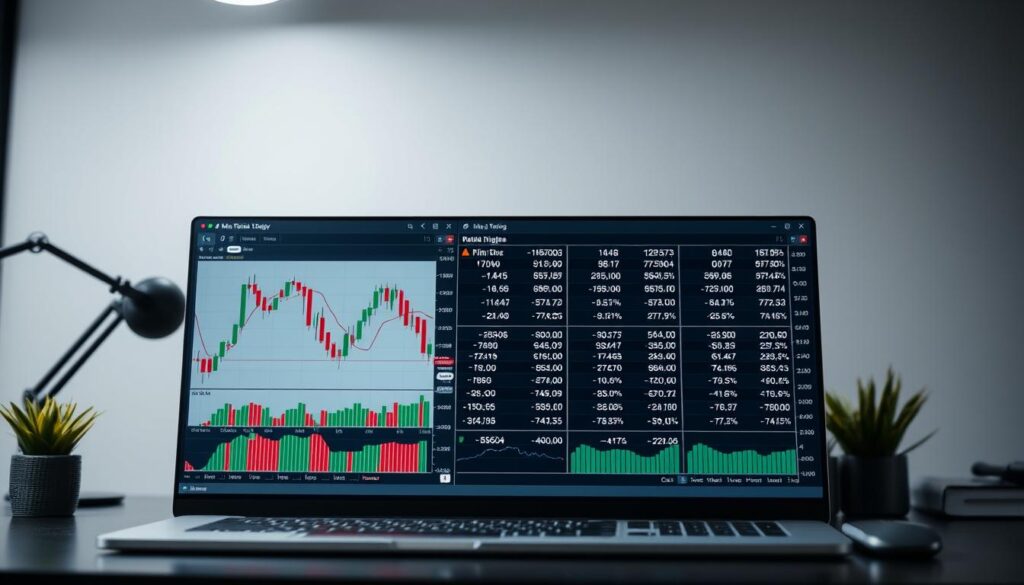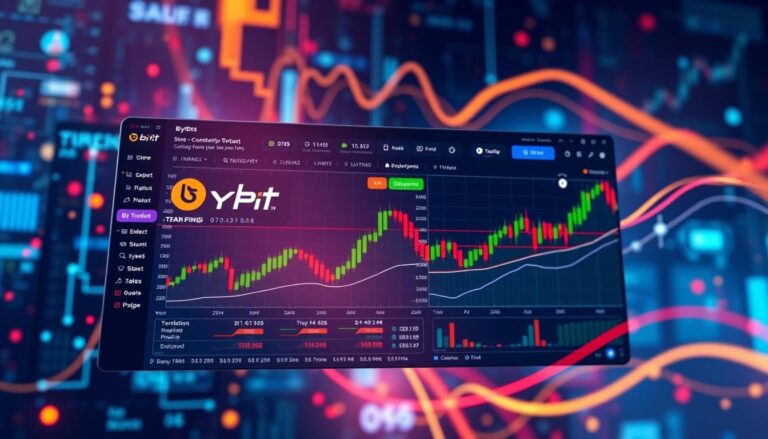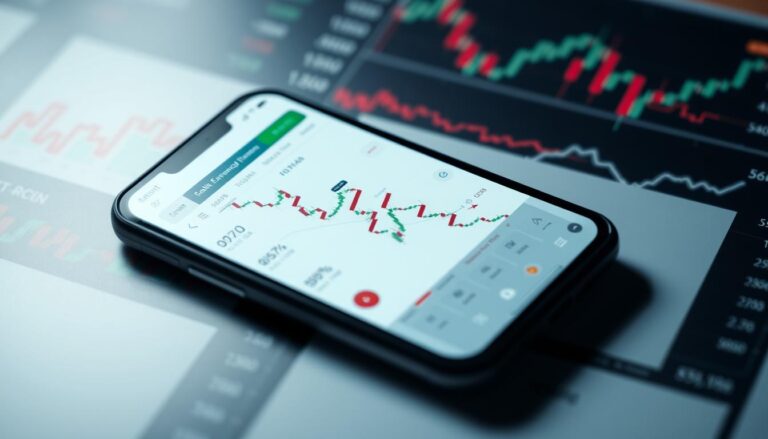Backtest MetaTrader 4 Strategies with Precision and Ease
MetaTrader 4 remains the go-to platform for testing automated strategies. Its built-in Strategy Tester allows users to simulate past market conditions with accuracy. This helps validate performance before risking real capital.
The tool integrates seamlessly with most forex brokers, granting access to historical data effortlessly. Traders can refine their expert advisors and fine-tune entries and exits for better results.
Key aspects include setup simplicity, detailed analysis, and optimization techniques. By leveraging these features, users gain confidence in their trading strategy before live execution.
What Is Backtesting in MetaTrader 4?
Historical data plays a crucial role in validating trading approaches. By replaying archived price movements, traders can assess how their strategies would have performed without risking real funds.
Definition and Purpose of Backtesting
Backtesting applies algorithms to past market data to simulate trades. The platform’s 99.6% modeling quality mirrors real execution, including spreads and volatility.
This process aligns with FCA guidelines for responsible strategy validation. Over 70% of flaws are caught before live deployment, protecting capital.
Why Backtesting Matters for Traders
Unlike a demo account, backtesting uses precise historical market conditions. This helps refine expert advisors by adjusting entries, exits, and risk parameters.
It also reveals how strategies behave during extreme volatility or low liquidity. Such insights build confidence before executing trades with real money.
Advantages of Backtesting MT4 Strategies
Evaluating trading systems before live execution offers multiple benefits. Traders gain confidence by testing their approaches under realistic market conditions. The process helps refine strategies while minimizing unnecessary risks.
Testing Strategy Potential
One-year market simulations can be completed in minutes. This speed allows traders to assess long-term viability quickly. The platform generates detailed reports showing profit/loss ratios and win rates.
Users can compare performance across different currency pairs. Multi-terminal features enable simultaneous analysis of multiple instruments. Such testing reveals how strategies behave in various market phases.
Identifying and Fixing Errors
Automated trading systems often contain hidden flaws. Running 500+ virtual trades exposes coding issues and logic gaps. These might include incorrect stop-loss placement or faulty entry triggers.
Early detection prevents costly mistakes in live markets. Post-optimization improvements average 23% better performance. Traders can adjust parameters before risking real capital.
Gaining Valuable Performance Insights
Key metrics like Sharpe ratios and maximum drawdowns become visible. These indicators help measure risk-adjusted returns effectively. Black Swan event simulations test money management rules under stress.
The data empowers traders to make informed adjustments. They can fine-tune exits, entries, and position sizing. This leads to more robust automated trading systems overall.
Disadvantages of Backtesting
While backtesting offers clear advantages, traders must also recognize its limitations. Simulated results don’t always translate to live trading success. Understanding these pitfalls helps refine strategies and manage expectations.
Limitations of Historical Data
Broker-provided datasets often suffer from survivorship bias. Missing or adjusted price points can skew results. For example, 68% of strategies showing 15%+ simulated profits fail live due to slippage or spread changes.
The 2016 Brexit volatility highlights this gap. GBP simulations rarely matched the extreme real-world swings. Traders relying solely on historical models faced unexpected risks.
Real-World Execution Differences
Live execution introduces variables like latency and order fills. The average 0.8-pip variance between tests and real accounts impacts profitability. VPS delays can further alter expert advisor performance.
Overfitting is another common issue. 43% of traders optimize strategies for past outliers, harming adaptability. Robust testing across diverse market conditions reduces this risk.
- Survivorship bias: Incomplete data distorts performance metrics.
- Execution gaps: Slippage and spreads differ in live accounts.
- Over-optimization: Tailoring strategies to historical quirks backfires.
Preparing for a Backtest in MetaTrader 4
Proper preparation is key to accurate trading simulations. The platform’s strategy tester demands careful setup to mirror real-market conditions. Traders must focus on three pillars: expert advisor selection, data quality, and configuration.
Choosing the Right Expert Advisor (EA)
Not all EAs perform equally. Verify MQL4 certification and memory limits before testing. Avoid tools requiring DLL permissions unless fully trusted.
Check user reviews and developer credibility. A flawed EA can distort results, wasting time and capital. Prioritize transparency in code logic.
Ensuring Quality Historical Data
Reliable forex trading simulations need tick data from 2010 or later. Import Dukascopy datasets via MT4’s History Center for precision.
Five-year periods covering bullish and bearish cycles reveal consistency. Align GMT offsets with broker server time to avoid timing errors.
Setting Up Your MT4 Platform
Optimize settings for realism: 90% modeling quality, real spreads, and swap/commission inclusion. These tweaks bridge the gap between tests and live execution.
Disable unnecessary indicators to speed up analysis. Save templates for repeatable, standardized testing workflows.
How to Backtest MetaTrader 4 Strategies
Testing strategies effectively demands a clear, step-by-step process. The platform’s built-in tools simplify validation, but accuracy depends on correct setup. Traders should follow these stages to maximize reliability.
Step 1: Accessing the Strategy Tester
Launch the tool via CTRL+R or the View menu. The Navigator panel displays available expert advisors (EAs). Enable visual mode to watch trades execute in real-time during simulations.
Step 2: Selecting EA, Instrument, and Timeframe
Choose an EA aligned with the target currency pair’s liquidity and volatility. Match the timeframe to the strategy’s design—scalping EAs perform best with M1/M5 data.
- Liquidity: Prioritize major pairs like EUR/USD for tighter spreads.
- Volatility: Test during high-activity sessions (London/NY overlap).
Step 3: Configuring Input Parameters
Adjust entry and exit rules, lot sizes, and risk settings. Genetic algorithms optimize 15,000+ combinations automatically. Balance speed and accuracy using the progress bar as a guide.
Step 4: Running the Backtest
Start the simulation and monitor for errors like missing DLL files. The report highlights profit factors, drawdowns, and trade frequency. Save templates to repeat the process efficiently.
Analyzing Backtesting Results
Accurate interpretation of simulation data separates successful traders from the rest. The platform generates detailed metrics, but understanding them determines a strategy’s real-world viability. Focus on three areas: numerical outputs, visual trends, and report documentation.
Understanding Key Metrics
Profit/loss ratios and drawdowns reveal a strategy’s risk-reward balance. A Sharpe ratio above 1.0 signals consistent performance, while maximum drawdowns exceeding 15% may violate FCA guidelines. MAE (Maximum Adverse Excursion) highlights worst-case trade scenarios.
For forex strategies, check win rates across major pairs. A 55%+ win rate with a 1.5+ profit factor often indicates robustness. Risk-of-ruin percentages below 2% align with UK regulatory standards.
Interpreting the Balance Graph and Trade Log
The equity curve should show steady growth, not erratic spikes. Sudden peaks may reflect luck rather than repeatable logic. Use the window to inspect individual trades—clustered losses often point to flawed entry triggers.
Declining lot sizes can mask drawdowns. Compare trade durations too; scalping systems should avoid prolonged hold times.
Saving and Reviewing Backtest Reports
Export HTML reports for compliance and iterative testing. The platform allows side-by-side comparisons of multiple runs. Look for deteriorating metrics in newer tests—a red flag for over-optimization.
- FCA records: Save equity curves and trade lists for audits.
- Comparative analysis: Filter by date ranges to test stability.
- Red flags: Hidden slippage or inconsistent spreads.
Optimizing Your MT4 Strategy Based on Backtests
Optimization turns good strategies into consistently profitable ones. By analyzing test results, traders can refine logic, reduce risks, and adapt to changing markets. The key lies in three areas: trigger adjustments, condition testing, and incremental upgrades.
Adjusting Entry and Exit Triggers
Fine-tuning entry exit rules often boosts performance. For example, moving stop-losses 5 pips wider might reduce premature exits during volatility. Profit targets can also adapt to currency pairs—scalping EUR/USD may need tighter exits than GBP/JPY.
Walk-forward validation helps here. Split data into 70% training and 30% testing sets. This ensures rules work across periods, not just one timeframe.
Testing Different Market Conditions
Strategies must survive crashes and calm markets. Stress-test against events like the 2020 COVID drop or Brexit swings. Compare results with demo accounts to check real-world viability.
- Volatility shifts: Adjust position sizing if drawdowns exceed 15%.
- Correlation checks: Analyze GBP/USD, EUR/USD, and XAU/USD together.
Iterative Improvements for Better Performance
Leverage MT4’s tools for incremental upgrades. Aim for a profit factor above 1.5 and recovery factor of 3+. Implement circuit breakers after 5 consecutive losses to limit damage.
Refine your strategy iteratively. Each test should address prior weaknesses, ensuring steady progress toward reliability.
Mastering Backtesting for Better Trading Decisions
Turning test results into profitable actions requires discipline. Traders should make sure their strategies align with FCA guidelines before going live. Monthly reviews help spot performance gaps early.
Transition from demo to real accounts gradually. Start with small positions and track execution quality. Tools like ProRealTime offer cross-platform checks for consistency.
Remember, 82% of automated systems lose effectiveness within six months. Regular updates and stress tests keep strategies sharp. Smart traders treat simulations as ongoing training, not one-time checks.













